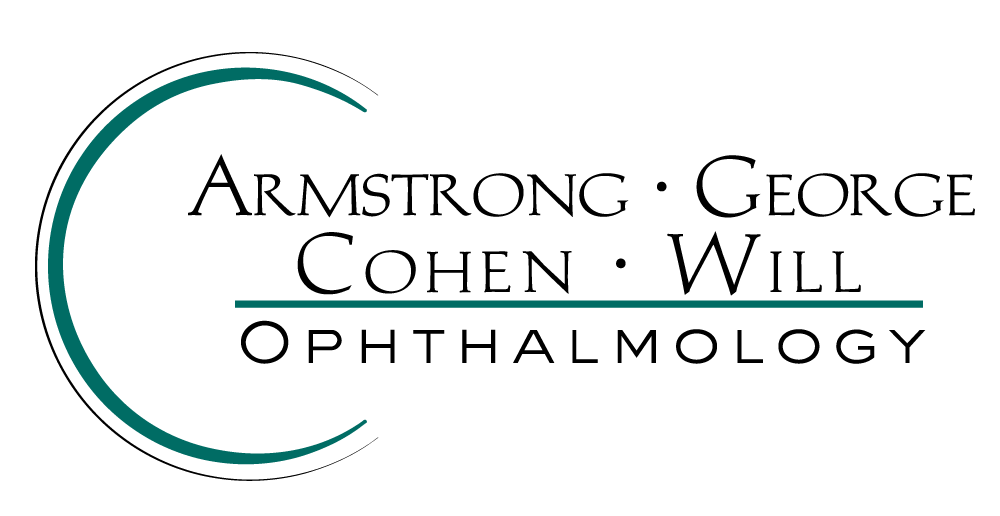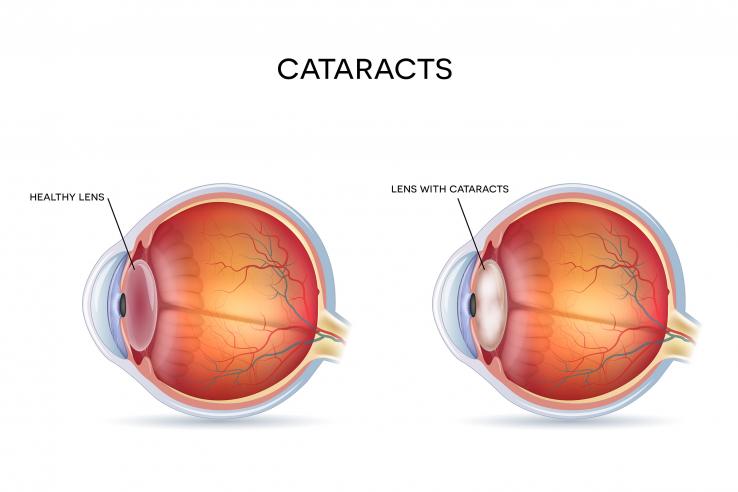Experienced Surgeons Advanced Technology Excellent Outcomes
A cataract is a clouding of the lens in the eye, blocking and distorting the passage of light needed for vision. The lens is about the size and shape of an M&M candy and is situated just behind the iris. Typically, patients form cataracts gradually in their 50s and 60s, and experience no pain. When cataracts begin to affect vision and lifestyle, however, they can be easily removed at an outpatient surgery center under local anesthesia. Armstrong George Cohen Will Ophthalmology performs more than 1,200 surgeries a year, making our practice one of the most experienced cataract surgery teams in the area.
New techniques developed over the past decades have made cataract surgery the safest and most successful operation in all of medicine. More than 2 million cataract surgeries are performed each year in the United States. Cataract surgery with implantation of a standard replacement intraocular lens (IOL) is covered by Medicare and most insurances, subject to deductibles and co-pays.
During surgery, an 1/8” incision is made in the cornea. In a process called phacoemulsification, an ultrasonic needle pulverizes the cloudy lens and suctions the particles from the eye. The lens is then replaced with a 6mm permanent IOL to give the eye proper focusing power. Surgery generally takes less than 15 minutes, and the incision usually needs no stitches. After one or two days, most patients notice remarkable improvement in their vision. They see colors more vividly and report clear, sharper vision, often with little need for eyeglasses or contact lenses.
Symptoms of Cataracts
• A gradual, painless blurring of vision
• Excessive glare and haloes with night driving
• Decreased vision in bright light
• Fading and yellowing of colors
• Frequent changes in glasses or contact lens prescript
Do You Have Cataract Symptoms?
If you suspect you have a cataract, or if your optometrist has diagnosed a cataract, schedule an evaluation at Armstrong George Cohen Will Ophthalmology. Although an optometrist may diagnose a cataract and assist with post-operative care, cataracts can only be removed by an ophthalmologist trained in intraocular microscopic surgery.
Drs. Thomas Armstrong, Eric George, Avraham Cohen and Blair Armstrong use the latest surgical technology and precise ocular measurements to insure your best visual result. Our ophthalmologists are Board-Certified and have successfully performed thousands of cataract surgeries.
Your procedure will be performed at one of our certified ophthalmic surgery centers:
Huntingdon Valley Surgery Center
1800 Byberry Road # 10
Huntingdon Valley, PA 19006
Abington Surgical Center
2701 Blair Mill Road # 35
Willow Grove, PA 19090
Advances in Cataract Surgery
Astigmatism correction: Nearly 1/3 of patients have astigmatism, which causes a distortion in vision. This can now be corrected during cataract surgery with special toric IOLs. This new technology gives patients the best possible vision, often without the need for glasses. There is an additional charge for these lenses, which are not covered by insurance.
Multifocal IOLs: These high-tech IOLs can provide good vision not only for distance, like traditional IOLs, but also for near vision. Most patients will never, or rarely, need glasses. There is some trade-off with these lenses in terms of haloes and/or glare at night, and not everyone is a suitable candidate. There is an additional charge for these lenses, which are not covered by insurance.
Minimally Invasive Glaucoma Surgery (MIGS): Armstrong George Cohen Will Ophthalmology offers a new procedure for cataract patients who also have glaucoma: Minimally Invasive Glaucoma Surgery (MIGS). A tiny stent is inserted during the standard cataract operation to relieve ocular pressure. Following a cataract/MIGS procedure, patients may need less medication for their glaucoma.
“Less Drops” cataract surgery: Traditionally, patients require four to five weeks of eye drops following a cataract operation to prevent infection and reduce inflammation. For patients who dislike eye drops or are unable to administer them correctly, medication can be injected into the back of the eye during surgery, lessening the need for post-op drops.
You should discuss all options with your surgeon and surgical coordinator prior to surgery in order to achieve your best visual outcome.


